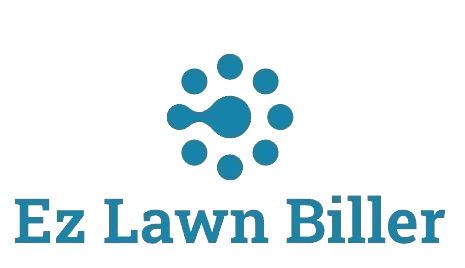Set Pricing Tips for Lawn Professionals
Understanding how to effectively set prices for lawn services is crucial for professionals in the landscaping industry. Pricing not only influences your profitability but also establishes your brand’s reputation in a competitive market. In this comprehensive guide, we will explore multiple strategies for pricing lawn care services that ensure you attract clients while maintaining healthy profit margins.
In the lawn care industry, establishing a pricing structure that reflects your services and expertise is vital. Many lawn professionals struggle with setting prices that cover their costs while remaining attractive to customers. This article will delve into essential factors that impact pricing, including market research, service offerings, and customer perception. Additionally, we will provide practical tips and strategies that can help you optimize your pricing model.
Understanding Your Costs
The first step in setting competitive prices is understanding your costs. This includes fixed costs such as equipment, labor, and materials, as well as variable costs that may fluctuate based on the season or specific jobs. To ensure profitability, you need to calculate both direct and indirect costs associated with running your lawn care business.
For example, let’s say you spend $1,000 on lawn care equipment and $500 each month on labor. If you complete ten jobs each month, dividing your costs among the jobs will give you a baseline of $150 per job just to break even. This calculation doesn’t even factor in utilities, marketing, or other operational expenses.
By accurately assessing your costs, you can avoid underpricing your services, which can lead to financial strain. Use tools like [lawn billing software](https://ezlawnbiller.com/) to help manage expenses and get a clearer picture of your overall financial health.
Researching the Market
Another essential aspect of pricing is understanding the market. Research your competitors to see how they price similar services. This will give you insight into what customers are willing to pay and how your prices compare. Are your competitors offering additional services or benefits that you aren’t?
In cities like Atlanta, where lawn care competition is fierce, being aware of the going rates can help you position yourself effectively. For instance, if competitors charge $50 for mowing but include additional services like edging and blowing, you might consider bundling services to match or exceed their value.
Additionally, geographical location often affects pricing structures. In urban areas, lawn care services may command higher prices due to demand and living costs, whereas rural areas may see lower prices. Understanding these regional dynamics can be crucial for setting your rates competitively.
Defining Your Service Offerings
Your pricing strategy should reflect the specific services you offer. Are you providing basic lawn maintenance, or do you also include landscaping, fertilization, and pest control? Service diversity can significantly influence pricing.
Consider offering tiered pricing packages that cater to different customer needs. For example, a basic package could include mowing and trimming, while a premium package includes fertilization, aeration, and seasonal clean-up. This strategy allows customers to select a package that fits their budget while giving you the opportunity to upsell higher-value services.
When defining your offerings, provide clear descriptions that highlight the benefits of each service. Use visuals and testimonials in your marketing to communicate the quality of your work, which can justify higher prices. Having a dedicated [lawn service app](https://ezlawnbiller.com/) can also help showcase your services efficiently.
Setting Competitive but Profitable Prices
Once you’ve analyzed your costs, researched the market, and defined your service offerings, it’s time to set your prices. Ensure your prices are competitive, but don’t forget about profitability. A common mistake in pricing is to solely rely on competitor prices without considering your own operational costs.
For instance, if your operational cost per job is $150, charging $40 for a service will not only result in losses but may also undervalue your professional expertise. Instead, aim for a price point that covers your costs while still being attractive to customers. A good rule of thumb is to mark up your costs by 20% to 50%, depending on the service.
Moreover, don’t shy away from adjusting your pricing based on the season. For instance, in peak summer months when demand is high, consider increasing prices slightly. Conversely, during slower months, promotional discounts can attract more clients while still maintaining profitability.
Communicating Your Value
How you communicate your pricing to clients can significantly impact their perception and willingness to pay. Transparency is key—be upfront about what your prices include, and explain the value behind your services. Clients are often willing to pay more for services that they perceive as high-quality and reliable.
Consider creating marketing materials or using your website to highlight what sets your lawn care services apart. Whether it’s organic fertilizers, eco-friendly practices, or personalized customer service, make sure your clients understand why investing in your services is worthwhile.
Utilizing [service company software](https://ezlawnbiller.com/) can enhance this process by allowing you to easily generate client quotes and invoices that detail the services provided, helping to reinforce the perceived value of your offerings.
Utilizing Technology for Pricing Management
Modern technology provides numerous tools to assist lawn professionals in managing their pricing strategies effectively. For example, [lawn service computer programs](https://ezlawnbiller.com/) can help you centralize your billing, manage client information, and automate invoicing processes.
Additionally, employing software solutions can simplify your service tracking, allowing you to assess which services are most popular and profitable. By analyzing service demand, you can adapt your pricing structure to focus on high-demand services that maximize profits.
Moreover, features like automated reminders for clients about upcoming services or payments can help maintain cash flow while adding convenience for your clientele. Technology not only streamlines operations but also enhances your professional image.
Monitoring and Adjusting Your Pricing Strategy
Your pricing strategy should be dynamic rather than static. Regularly monitor your performance and gather feedback from clients to evaluate how your pricing aligns with customer satisfaction and market standards. Use sales data to identify trends and make informed pricing decisions.
For instance, if you notice that certain services have low uptake despite competitive pricing, it may be time to rethink how you market those services or consider adjusting the price. On the other hand, if a particular package is popular, you might want to capitalize on that success by promoting it even further or offering bundled discounts.
Client feedback can be invaluable for making adjustments. Consider sending out surveys or directly asking clients about their thoughts on your pricing and services. This feedback can help you fine-tune your approach and ensure that your pricing remains competitive and attractive.
Creating a Customer Loyalty Program
Establishing a customer loyalty program can be an effective way to encourage repeat business while maintaining your pricing structure. Providing discounts, freebies, or exclusive offers for returning clients fosters a sense of loyalty and can justify your pricing.
Consider offering a discount to clients who refer new customers or who sign up for recurring services. This not only incentivizes customer retention but also can lead to new client acquisitions through word-of-mouth. In a competitive market, retaining customers can often be easier and more cost-effective than acquiring new ones.
As your customer base grows, ensure that your loyalty program is manageable and doesn’t strain your operational resources. Tailor the program to suit your business model and customer preferences, and promote it through your website and social media channels.
Conclusion
Setting effective prices is a multifaceted challenge for lawn professionals that requires a deep understanding of costs, market trends, and customer value perception. By following the strategies outlined in this article—from analyzing your costs and researching competitors to utilizing technology and creating loyalty programs—you can develop a pricing model that not only attracts clients but ensures profitability.
Remember, your pricing strategy should be flexible, allowing for adjustments based on market changes and customer feedback. Embrace the tools available to you, such as [lawn company apps](https://ezlawnbiller.com/) and other software solutions, to optimize your pricing process.
As you refine your pricing strategy, aim for a balance that reflects the quality of your services while remaining competitive in the marketplace. With the right approach, you can set prices that enhance your business’s reputation and ensure long-term success.




